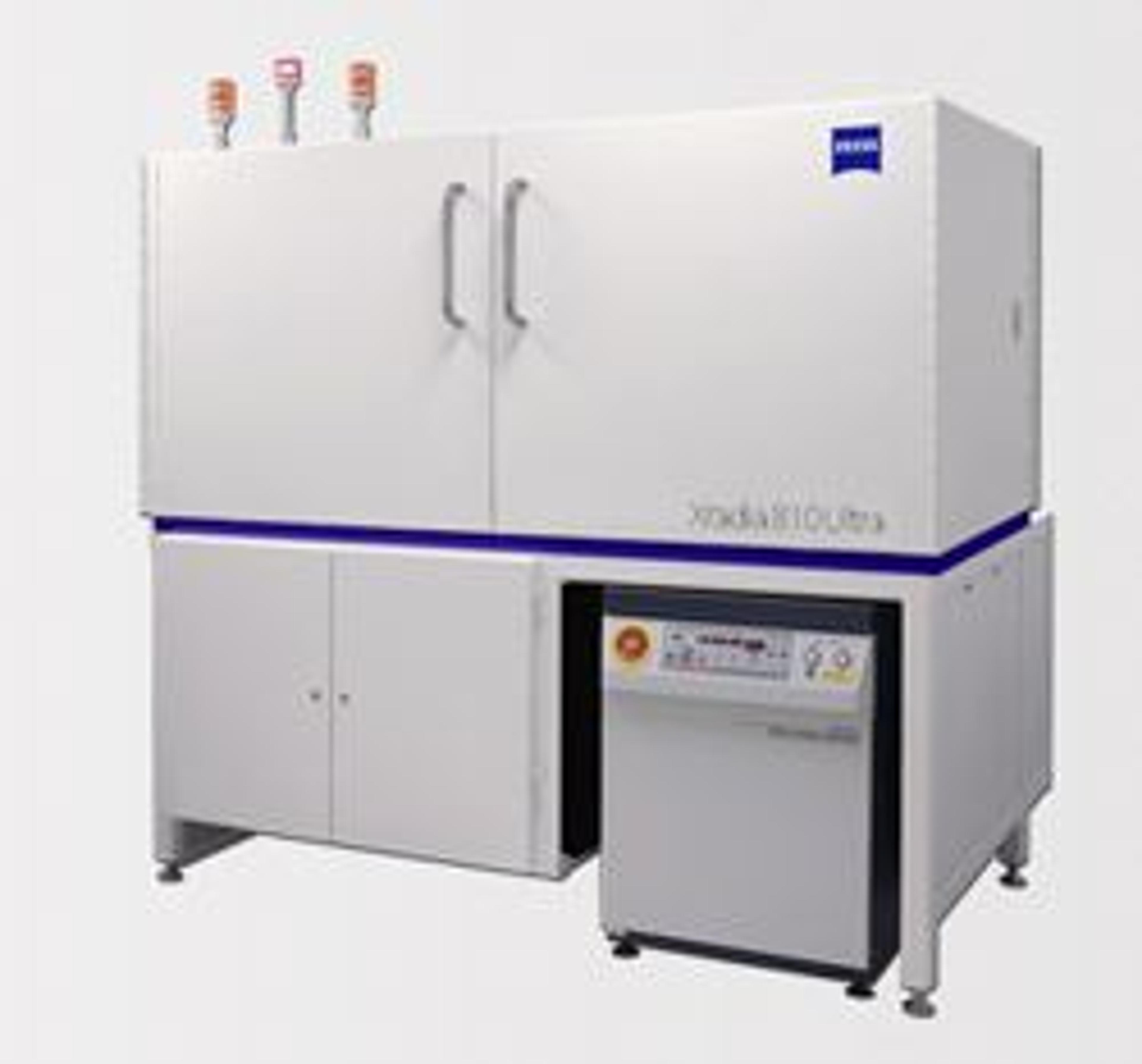ZEISS Xradia 810 Ultra X-ray Microscope Speeds Nanoscale X-ray Imaging by a Factor of Ten
4 Aug 2013
ZEISS is introducing a new X-ray microscopy (XRM) solution that increases throughput for three-dimensional imaging at the nanoscale by up to 10 times. Using a series of technical innovations to achieve better contrast, and in turn faster acquisition, the new ZEISS Xradia 810 Ultra revolutionizes the X-ray imaging model in scientific and industrial research labs worldwide. Introduced at the 2013 Microscopy and Microanalysis conference in Indianapolis, the microscope system is available to order now.
Xradia 810 Ultra operates at 5.4 keV, a lower X-ray energy that delivers better contrast and image quality for many materials. Contrast improves significantly as these lower-energy X-rays are absorbed more strongly, enabling high-quality tomographies to be completed at vastly reduced imaging times. The ZEISS business unit X-ray Microscopy engineered the Xradia 810 Ultra architecture around this new source energy, using innovative optics to extend the capabilities of the Xradia Ultra family, the only lab-based non-destructive imaging solutions to achieve resolution down to 50 nanometers.
By making lab-based nanoscale X-ray imaging an order of magnitude faster, Xradia 810 Ultra optimizes the business case for XRM in both science and industry:
In oil and gas feasibility studies, measurements used in digital rock physics to characterize critical parameters such as porosity and tortuosity can now be conducted in a few hours. The superior contrast delivered by Xradia 810 Ultra optimizes imaging of carbonate rock as well as shale.
4D and in situ studies, where internal structure is imaged repeatedly over time and under varying conditions, can now be performed in a fraction of the time making these experiments more accessible to a greater number of researchers. As compared to physical sectioning methods, the non-destructive XRM approach can now claim a speed advantage for similar volumes when compared to serial section (slice and view) techniques.
Higher absorption contrast at 5.4 keV in addition to Zernike phase contrast makes high-resolution X-ray imaging viable for a variety of low Z and bio materials such as polymers and tissue samples.
In central microscopy labs where researchers utilize XRM systems, the cost per sample for subscribing users is reduced, which will expose this unique technology to a broader base of researchers.
“As pioneers of nanoscale X-ray imaging at synchrotrons and in prominent research labs worldwide, the next logical step was to optimize XRM for the challenging materials our customers are focusing on today and into the future,” says Dr. Kevin Fahey, Chief Materials Scientist at Carl Zeiss X-ray Microscopy, Inc. “With the study of medium and low Z materials a major focus throughout the research world, Xradia 810 Ultra makes it more cost-effective and efficient to image a variety of polymers, oxides, composites, some fuel cells, and other materials of interest.”
Along with nano scale resolution, Xradia 810 Ultra leverages both absorption and Zernike phase contrast and advanced optics adapted from the synchrotron to deliver industry-leading resolution and contrast. The system advances the ZEISS philosophy of innovating timely, high-powered solutions that extend the limits of exploration to enable breakthrough research in laboratories worldwide.

